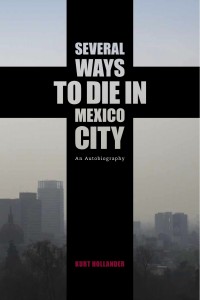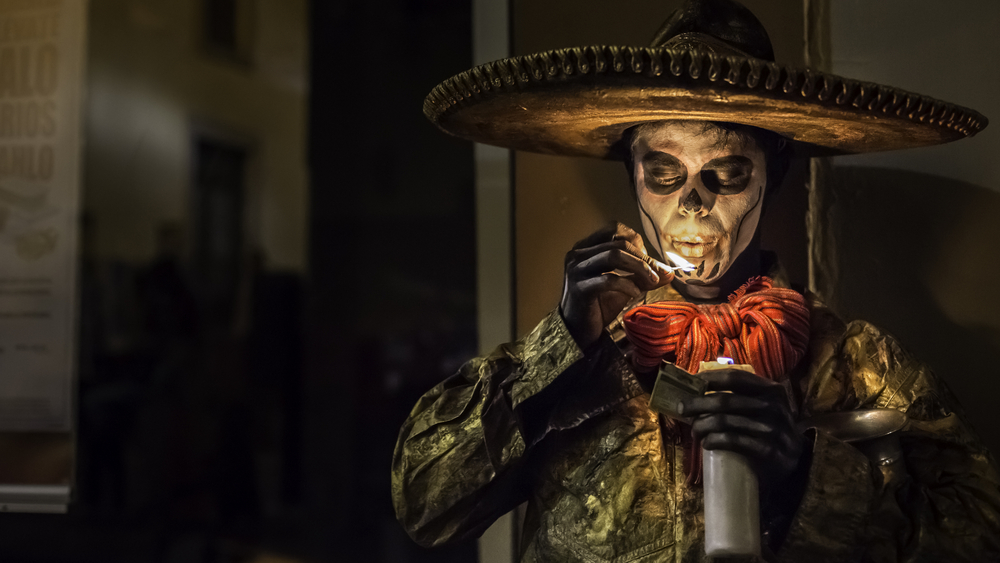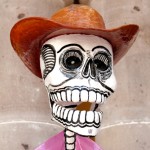 I swear, I am not going to write exclusively about Mexico City. Really, I’m a science writer, not a travel writer. I swear it. But after my initial post, Christie sent me the book, Several Ways to Die in Mexico City, by Kurt Hollander and I just had to read it.
I swear, I am not going to write exclusively about Mexico City. Really, I’m a science writer, not a travel writer. I swear it. But after my initial post, Christie sent me the book, Several Ways to Die in Mexico City, by Kurt Hollander and I just had to read it.
At first, I was actually very excited. Death, after all, is a fascinating topic here in Mexico. Perhaps due to a solid 100 years between 1820 and 1920 of near-constant upheaval, Mexico has developed some fascinating traditions around death – Day of the Dead being just one. A fresh, fun look at the various ways Mexican view death (plus a few Mary-Roach-style details) could be really interesting, if done right.
Sadly, it wasn’t. This book should have been titled “God, I Hate Mexico.” Instead of an examination of the culture of death I got a litany of things that annoy one Kurt Hollander.
Depending on the building and on the neighborhood, water in Mexico City comes out of the tap in a variety of colors (yellow, rusty or earthy), flavors (sulfuric, chlorinated or metallic) and even textures (muddy or gritty).
I am literally surrounded by shit. The shit that fills the waste baskets in public bathrooms, that which animals leave on the sidewalks, that which my two large Labradors leave for me to clean up in the patio or in the park in front of my house, and that which my two cats daintily deposit in their cat boxes.
Exercise exacerbates the effects of the decreased presence of oxygen in Mexico City’s atmosphere and can cause headaches, nausea, fainting, dizziness and insomnia…My basketball moves are slower, my stamina suffers, and I probably wheeze more during sex… exercising in Mexico City can be as hazardous to my health as chain-smoking.
And on and on. For the record, no facet I have ever turned here has spit out anything but crystal clear water – true, I don’t drink it, but I know people who do. My last place in Berkeley, California used to regularly give me orange water, but the landlord said it was iron and was good for me (which is marginally true, I learned, but no mention of whether it also had lead).
 In fact, this whole book seems less about Mexico City and more about his personal frustrations about getting old. In that light, it’s actually interesting, if deeply sad. We learn that Hollander has health issues with his stomach and that they have made him miserable. We learn that he’s been to doctors, witches, and faith healers – all to no effect. This condition has made it, among other things, impossible to drink alcohol. Which may explain his odd views on it.
In fact, this whole book seems less about Mexico City and more about his personal frustrations about getting old. In that light, it’s actually interesting, if deeply sad. We learn that Hollander has health issues with his stomach and that they have made him miserable. We learn that he’s been to doctors, witches, and faith healers – all to no effect. This condition has made it, among other things, impossible to drink alcohol. Which may explain his odd views on it.
Being that they tend to work within the European tradition, a large number of Mexican artists are alcoholic, as are the poets and writers who praise the artists’ work in catalogs.
Mexicans have a reputation for not being able to handle their alcohol.
As do Chinese, Irish, philosophers, JRR Tolkien’s elves, Mormons, and every science writer that I have ever met. The book actually has a bizarre perspective on alcohol, which – between mescal, pulque, tequila, and beer – has a rich history here. He summarizes that history knowledgably, but then launches into endless sermonizing about alcohol abuse, as if it’s unique to Mexico.
Comments like these, along with sections titled “Cannibal Capital,” “Sick City,” and “Mexico Shitty” indicate that Hollander may have the makings of the worst tour guide in history. In order to write about a place, be it Bombay, London or New York, I think you should have a deep devotion to that place. You have to love the quirks and the oddities. But Hollander doesn’t love this city – he doesn’t even like it.
 Nowhere is this more apparent than in his chapter about the air. The chapter is littered with inaccuracies and scientific half-truths. He cites 1992, the year Mexico City was declared the world’s most polluted city, but neglects the fact that the air has been getting better ever since (and the fact that it was nothing compared to LA in the 70s).
Nowhere is this more apparent than in his chapter about the air. The chapter is littered with inaccuracies and scientific half-truths. He cites 1992, the year Mexico City was declared the world’s most polluted city, but neglects the fact that the air has been getting better ever since (and the fact that it was nothing compared to LA in the 70s).
He frightens the reader with words like carbon monoxide, ozone, nitrogen oxides, sulfur oxides, toluene, xylene and benzene. But these are in every major city. And while quantifying the diverse phenomena we call “air pollution” is highly subjective, according to the World Health Organization, Mexico City doesn’t even make the top ten of the world’s worst air anymore (the worst is actually in Awatz, Iran). The truth is, most atmospheric scientists see Mexico as a success story – one that might inform China, Nepal, and Central Africa.
Finally, in Chapter 8 Hollander gets to the whole reason I started his book – death in the Mexican culture. But at this point, I’m just exhausted. He gives a relative bland summary of Aztec death ceremonies, martyrs, and Santa Muerta. The writing is not fabulous, but it’s not terrible. Hollander alternates between a chummy sort of voice in his autobiographical intros and matter-of-fact lecture in the rest. I guess the main problem with this book, is that the reader walks away with the impression that Hollander deeply loathes Mexico City. And it’s tiring to read someone rag on a city for 252 pages.
It’s not all negative, of course. Hollander has researched the food, plumbing, and indigenous history reasonably well and often provides a nice primer. But there’s nothing new in this book, no original reporting beyond his memories. Even to someone like me, who has only been here for a year and a half, I didn’t learn much new. He doesn’t really dig deeply into any of his topics and has a tendency to wander around ideas rather than hit them. And, when given a chance, he highlights the most grisly aspects of the culture and avoids the redeeming bits.
I’ve never met Kurt Hollander. I’m not sure why he sees death everywhere in a city so full of life.  I’m not sure why he seems trapped in a Mexico City of 1995, when the air was bad and the city ringed by factories. But if I was to judge by his voice in this book, he must be a very sad man, indeed. Mexico is not perfect – but if you can endure the low-level background noise of chaos, it’s a rich and exciting place to live. But after reading this book, I’ll be sure to leave before it makes me bitter.
I’m not sure why he seems trapped in a Mexico City of 1995, when the air was bad and the city ringed by factories. But if I was to judge by his voice in this book, he must be a very sad man, indeed. Mexico is not perfect – but if you can endure the low-level background noise of chaos, it’s a rich and exciting place to live. But after reading this book, I’ll be sure to leave before it makes me bitter.
All images, minus the book cover, generously donated by Shutterstock
I was born in Mexico City, and now I live 2 hrs from it towards the north of the country, my parents and part of my family still live there, and I most admit the complex and the contrast features of the city, but I really enjoy to visit it (as a tourist now)seeing my relatives or enjoying whatever: eating, dancing, walking,having a cup of coffe… As you comment, Mexico City has been improving in many ways, I’d say the last 15 or 20 years Thanks Eric for the comment!